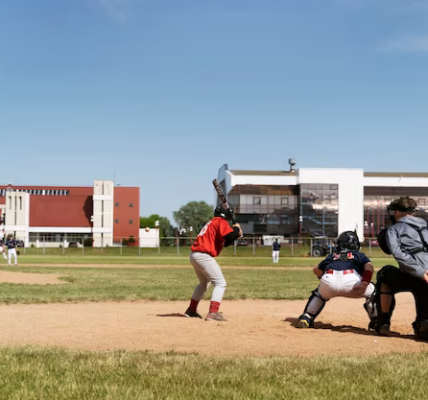Baseball, a sport cherished by many, varies in game length depending on several factors. This article delves into the average duration of baseball games across different levels, including Major League Baseball, high school, and youth leagues, highlighting the elements that contribute to these variances.
Understanding Innings in Baseball
An inning, a fundamental unit of play in baseball, involves each team having a turn at bat. A standard Major League Baseball game consists of nine innings, while high school games usually have seven, and Little League matches typically comprise six innings. The average inning lasts about twenty minutes, making a nine-inning game approximately three hours long.
Key Factors Affecting Game Length
- Pitcher’s Pace of Play: The speed at which a pitcher delivers pitches can significantly affect game duration. Major League Baseball has a rule for pitch delivery time, although it is seldom enforced;
- Time-outs Called by Batters: Batters can request time-outs, which can extend the length of their at-bat and, consequently, the inning;
- Weather Conditions: Elements like rain and high winds can cause game delays or lead to faster or slower play, impacting overall game time;
- Temperature Effects: Warmer temperatures tend to increase offensive play, potentially lengthening the game.
Specific Conditions that Modify Game Time
- Extra Innings: Games tied at the end of the standard innings extend into extra innings until a winner is determined;
- The Ten Run Rule: In certain leagues, a game can end early if a team leads by a significant margin;
- Forfeits: In cases where a team cannot field enough players, the game may end in a forfeit, impacting the game’s official duration.
The Role of League Rules and Regulations in Game Duration
League rules and regulations play a pivotal role in determining the length of a baseball game. This section explores how different leagues implement specific rules that directly impact game duration. For instance, Major League Baseball (MLB) games typically last nine innings, but this is subject to change based on various circumstances such as doubleheaders or special events, where games might be shortened.
In contrast, high school and Little League games have their own set of regulations. High school baseball often employs a mercy rule, which can significantly shorten games if a team has a large lead. Little League games have a strict set of guidelines regarding innings and pitch counts to ensure player safety and manage game length.
Understanding these league-specific rules is crucial for players, coaches, and fans alike, as it provides a clear expectation of game length and how different scenarios might alter the standard duration of a baseball match.
Impact of Broadcast and Commercial Considerations on Baseball Games
Broadcast and commercial considerations have increasingly influenced the length of baseball games, especially at the Major League level. This section examines how television and advertising agreements can extend the duration of games. Commercial breaks between innings and during pitching changes provide revenue streams for leagues and broadcasters but also add time to the overall game duration.
MLB has made efforts to balance commercial interests with the pace of play, implementing rules to limit mound visits and considering pitch clocks to keep games moving. These changes aim to make baseball more appealing to a broader audience by reducing downtime and keeping the action continuous.
As the landscape of sports broadcasting evolves, the impact of these commercial considerations on the game’s duration remains a topic of interest for league officials, players, and fans. Balancing the commercial aspects with the game’s traditional pace is a challenge that baseball continues to navigate.
Comparative Table: Factors Influencing Baseball Game Duration
| Factor | Major League Baseball | High School Baseball | Little League Baseball |
|---|---|---|---|
| Standard Innings | Nine | Seven | Six |
| Mercy Rule | Not applicable | Often applied | Commonly used |
| Pitch Clock Enforcement | Rarely enforced | Sometimes enforced | Not applicable |
| Weather Delays | Common | Less frequent | Varies |
| Commercial Breaks | Frequent, longer duration | Shorter, less frequent | Minimal |
| Extra Innings | Unlimited until winner | Limited by rules | Limited by rules |
Video Guide
To answer all your questions, we have prepared a video for you. Enjoy watching it!
Conclusion
In conclusion, the duration of a baseball game is influenced by a complex interplay of factors, including league rules, player actions, weather conditions, and commercial considerations. Understanding these variables is key for fans, players, and coaches to appreciate the nuances of game length across different levels of play.
From the regimented structure of Major League Baseball to the more flexible formats of high school and Little League games, each level of play offers a unique experience in terms of duration. Factors such as the mercy rule, pitch clock enforcement, and the impact of broadcast requirements further add layers to the understanding of how long a baseball game can last.
As baseball continues to evolve, so too will the factors that dictate game length, requiring ongoing adaptations to maintain a balance between preserving the game’s integrity and meeting the needs of modern audiences and players. Whether you are a seasoned fan or new to the sport, appreciating these dynamics enhances your enjoyment and understanding of the game.




